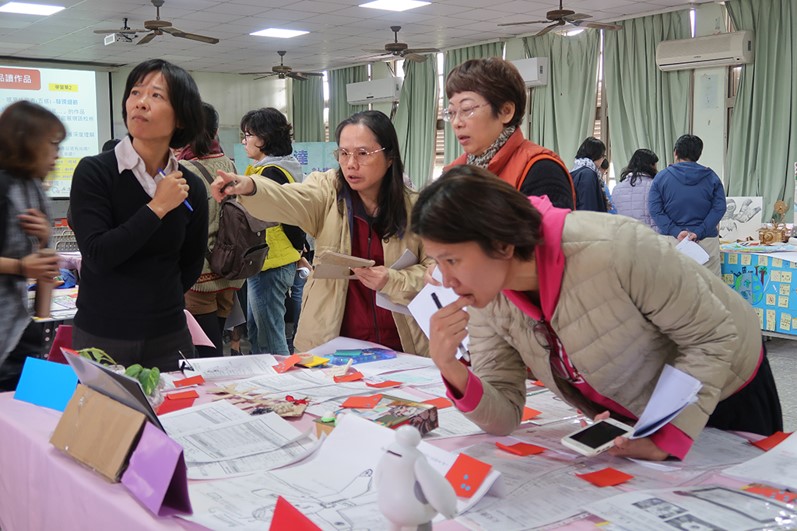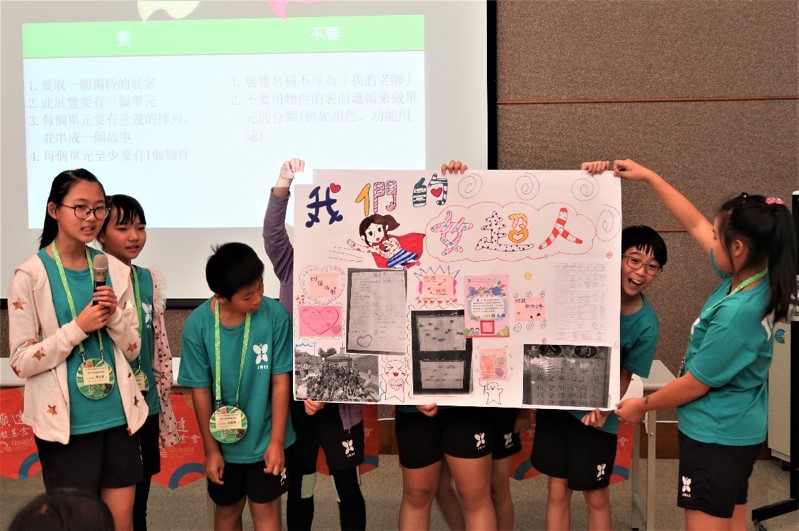Select
The Quanta "Design Learning" Program stands as an innovative education program introduced by Quanta Culture and Education Foundation (QCEF) in 2013 through collaboration efforts with schools. The program is based on the theory of project-based learning (PBL) and design thinking. Initially, from 2013 to 2018, the program focused on exhibition as its main learning mission. In 2019, a strategic evolution was initiated, integrating technology and digital missions to revolutionize the landscape of teaching and learning.
.jpg)

The core of the program lies in crafting a learning environment designed to arouse students’ learning interests through tasks with " a sense of mission ". Throughout a one-semester exploration, students immersed themselves in the process of logical thinking, creative thinking, collaborative teamwork, and proactive decision-making. This departure from the traditional teacher-student instructional model, marked by one-way knowledge transfer, reshapes the educational paradigm. It guided teachers to innovate their curriculum, ignited students' enthusiasm for learning, and reinstated the impetus for learning back into the hands of students. It further steered students towards becoming independent lifelong learners while cultivating 4C core competencies: critical thinking, communication, collaboration, and creativity.
.jpg)

QCEF annually selects a theme that seamlessly combines aesthetics and life. The teaching teams of participating schools leverage this theme as the core concept to design a semester-long learning task. Since 2019, the program has categorized learning tasks into "Curating Exhibition " and "Digital Mission", offering opportunities for different types of schools to apply based on their preferences and capabilities.
【Curating Exhibition】
Students ultimately curate an exhibition as their learning outcome.
【Digital Mission】
Students ultimately utilize programming languages and employ digital or technological tools to propose solutions to problems as their learning outcome.
Course of Action
The course of action includes six steps, facilitating school teachers and students in completing tasks for the exhibition-curating mission:
Provide resources
QCEF provides the following resources to assist the teaching teams of each school in designing relevant courses for this project.
How to apply
Every year, 18-21 schools from elementary and middle schools in Taiwan are selected to participate for one semester.
Past school tasks
To learn more about past school tasks, including their outcomes and teaching design content, please visit the "Design Learning" Program Online Exhibition Platform. Click on the image below to access the platform.
Program Consulting Team
Chin-Hsien Lu, Program Principal Investigator, National Taipei University of Education
Wei-Ren Chen, Assistant Professor, National Taiwan Normal University
Chi-Hsuan Chang, Associate Professor, National Taiwan Ocean University
Kai-Ju Huang, Assistant Professor, National Chiayi University
Ching-Ling Wu, School Teacher, Gifted Class, Nantou Guanghua Elementary School
Kuei-Chih Shen, School Teacher, Affiliated Experimental Elementary School of National Chiayi University